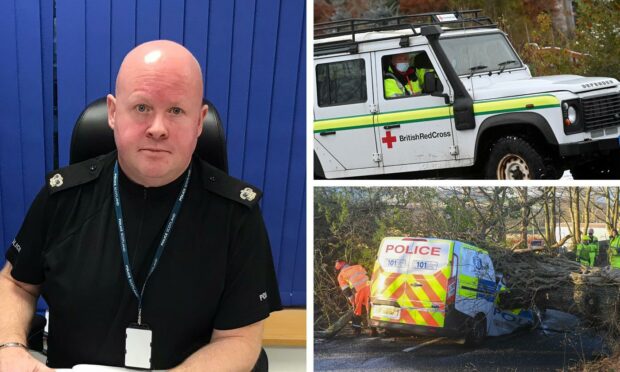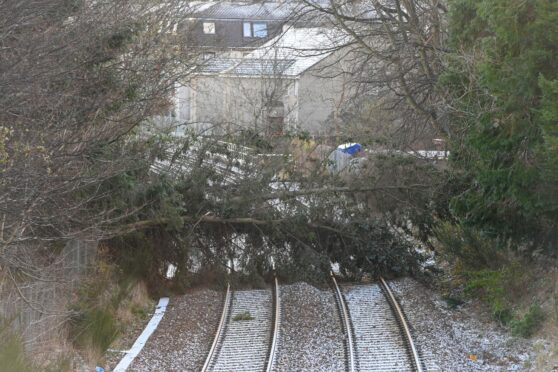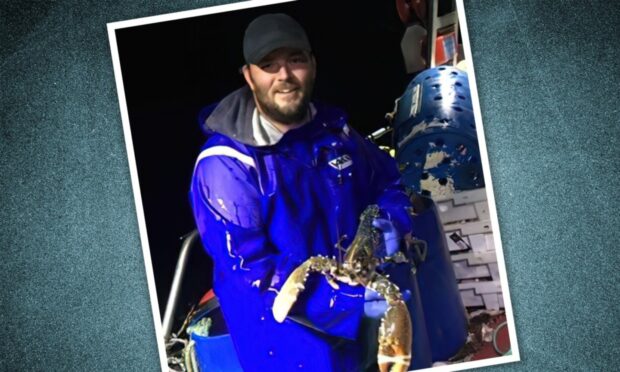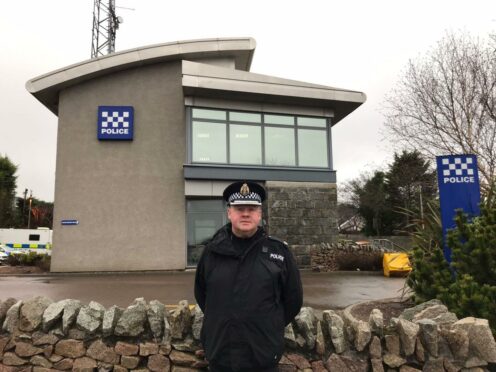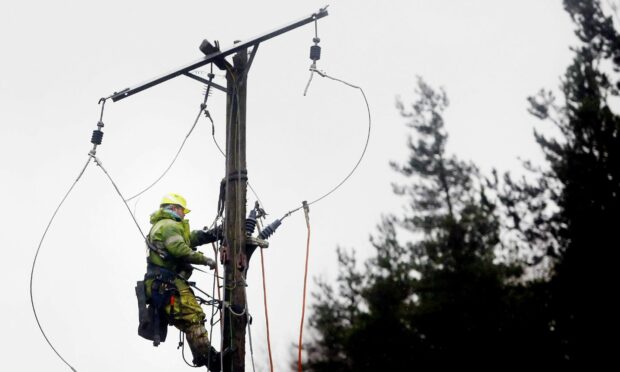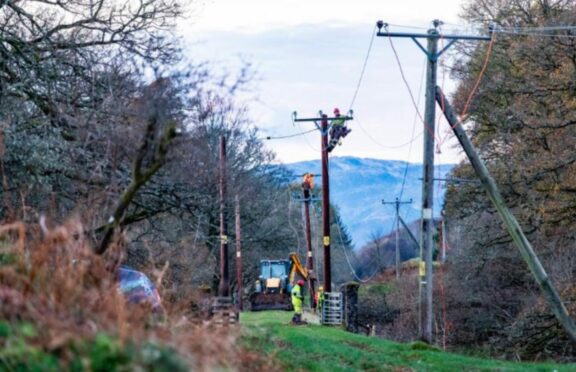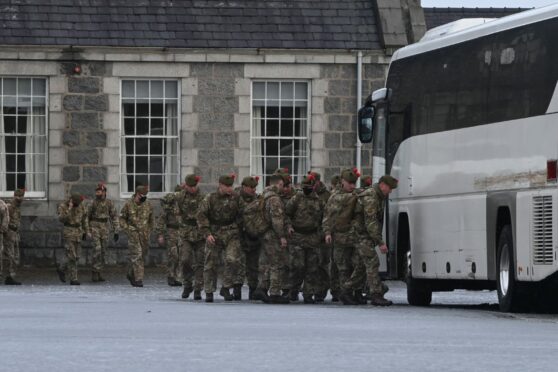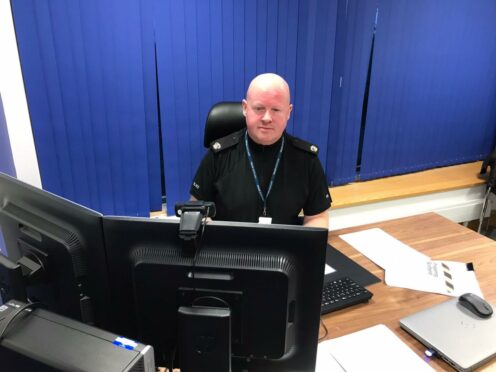It’s a grey Saturday morning at Nigg Police Station as Superintendent Murray Main starts up his computer, his tinted windows making the gloom outside look even darker.
Storm Arwen’s aftermath is entering its second week, and Supt Main is leading a taskforce of specialists dealing with upheaval that has lasted far longer than anyone imagined.
He is preparing for the 22nd virtual meeting of the Local Resilience Partnership (LRP) since last Friday’s 90mph gales.
The group of emergency services, council, military and other leaders have been masterminding the response to the catastrophic damage wrought by Arwen.
Our exclusive insight into its workings will reveal:
- How the scale of the destruction surpassed everyone’s worst expectations
- Why it has taken so long for power to be restored
- What the most pressing problems are now as they move from ‘response’ to ‘recovery’ mode
Aberdeen Journals is given unprecedented access to the LRP, which has been meeting two or three times every day, as a fly on the wall during the talks on Saturday morning.
Pouring a cup of tea at the Aberdeen office, Supt Main says that his 8am start meant he had something of a “lie in” compared to the previous several days…
Day One
With warnings of severe weather on the way, the taskforce was assembled on the morning of Friday, November 26.
Members from about 30 organisations were bracing themselves for the worst.
Then while they launched their preparations, the Met Office upgraded its warning across the north-east to “red” status.
The last time that happened was when the Beast from the East blasted the UK in 2018.
By the end of the day, 35-year-old truck driver David Lapage had been killed by a falling tree, and a police vehicle was crushed by another while officers attended the scene.
Tens of thousands of people spent the night in blackout conditions as the fierce wind caused widespread power cuts.
Rail passengers spent 17 hours stuck at Huntly station, trees were toppled in their hundreds, some rural homes had no water and various buildings suffered serious damage.
Last Saturday morning, police declared it a “major incident”.
Storm Arwen taskforce surprised by scale of destruction
Supt Main takes us through the alarming chain of events.
He said: “It’s fair to say that the magnitude of the damage was so significant and unprecedented… It was certainly far and above what we had anticipated.
“We had four meetings on that Friday, late into the night.
“We were dealing with loss of life by then, which showed how dangerous it was.”
With thousands of people stuck without power on Saturday, another three sessions were called.
Why did it take so long to restore power to some homes?
About 65,000 people across the north-east were plunged into darkness when the storm struck, and that became one of the taskforce’s top priorities.
SSEN initially expected to have all of them reconnected within 48 hours.
But the damage to supply systems was so severe, and so far-reaching, that only 30,000 of those properties had electricity by Sunday night.
There followed a week plagued by uncertainty for thousands of rural residents.
It was only by the evening of Sunday, December 5, that all homes had their power restored.
The staggering duration of the power outages has caused frustration among some quarters.
Even Supt Main, a veteran of 31 years spent mostly in the north-east, was shocked when the extent of the damage became clear.
He added: “We were told SSEN was expecting a 48-hour turnaround.
“But the scale of the devastation across the country, particularly here in the north-east, was beyond what anyone expected.
“We were working to a reasonable ‘worst case scenario’ at the time.”
Over the past week, about 950 engineers have been deployed to the area from across the UK.
“There were about 1,000 faults, which is unprecedented in terms of storm damage,” the senior officer explained.
“By Monday we were already planning for this to last several more days…”
How does Storm Arwen taskforce meeting operate?
The LRP meeting takes place online with representatives joining virtually from their offices, living rooms and kitchen tables.
It begins with the Met Office describing the weather ahead, warning of some heavy rain but nothing likely to cause any more power cuts.
SSEN then supplies an update on the number of homes still without power, offering some hope that the crisis will be over soon for many.
Director of corporate affairs Graham Keddie describes Arwen as the “storm of all storms”.
Storm Arwen taskforce works to trace vulnerable people
The LRP’s dedicated “care for people” sub-group discusses the efforts of teams on the ground in checking on vulnerable individuals.
Their main focus is whittling down a list of those still unaccounted for – who have perhaps gone to stay with friends and family, or booked into a hotel, rather than remain in a home with no power.
Aberdeenshire Council chief executive Jim Savege, staff from NHS Grampian and the military also take part as the Storm Arwen taskforce plots the days ahead.
The armed forces have been sent to help out until 10pm on Sunday night, though troops may continue beyond then if needed.
A fire service representative talks about the recent work done by crews to help remove fallen trees that were blocking people’s drives.
The meeting concludes with promises of another catch-up at 4pm, and further talks the next day.
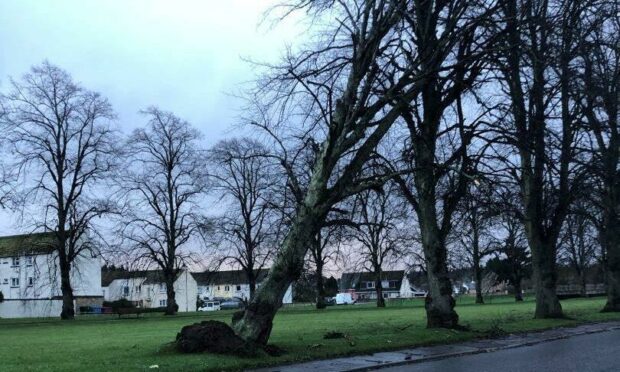
What is the Local Resilience Partnership?
It’s a group of various partners all overseeing and co-ordinating the herculean response to Storm Arwen.
Generally, the groups are set up under Scottish Government guidelines in response to major incidents.
Who else is involved?
The “category one” groups are the emergency services, local authorities and the health boards affected by any given incident.
Then “category two” groups can include other relevant bodies.
In this case, that means SSEN, Scottish Water, gas suppliers, and voluntary groups like the Red Cross among many others.
For how long will the resillience group continue to meet?
Supt Main tells us the group will meet for “weeks” to come, until some normality has been restored to affected communities.
The group is now going from the “response” phase to “recovery” phase.
That means workers will focus on helping people to cope with the after-effects, providing practical care in whatever ways required.
What else has the LRP helped with?
In recent years, the partnership has been assembled to steer communities through disasters such as the Stonehaven derailment, Storm Frank flooding and the coronavirus pandemic.
What are the benefits of the Storm Arwen taskforce?
Supt Main said: “When we do call an LRP, it’s got to be short, sharp and straight to the point – and in very short timescales.
“It’s for major occurrences that require a multi-agency approach.
“It’s necessary to avoid duplication and make the response as efficient as possible.
“We do that by accessing the specialisms and experience that each organisation brings.
“Ultimately it’s about helping each other, and our communities.”
How important is it that local people are helping out?
Supt Main is full of praise for those who are giving up their own time to look after others in their area.
“A staggering number of individuals are coming forward at a time of real need,” he said.
“There’s some real community spirit that’s heartwarming to see, we are comforted by that.
“But while roofs will repair and fences will fix, we will be left with the devastation of Storm Arwen on a human level for a long time.”
